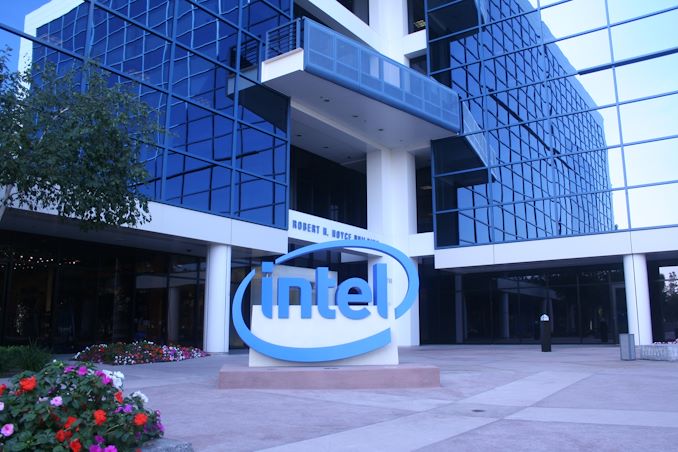Intel Reorganizes In Wake of 7nm Woes; Chief Engineering Officer Murthy Renduchintala To Depart
by Ryan Smith on July 27, 2020 5:30 PM EST
Coming in the wake of last week’s disclosure that their 7nm yields are roughly a full year behind schedule, Intel this afternoon has announced that they are reorganizing the technology side of the company. Key to this change is that Intel is breaking up its monolithic Technology, Systems Architecture and Client Group (TSCG) into several smaller groups, all of which will report directly to CEO Bob Swan. Meanwhile Intel’s chief engineering officer, Dr. Murthy Renduchintala, who had been leading the TSCG, will be departing the company at the end of next week. The reorganization is effective immediately.
As a result of this reorganization, TSCG is being broken up into five groups focusing on manufacturing and architecture. These are:
- Technology Development: Focused on developing next-generation process nodes. Led by Dr. Ann Kelleher.
- Manufacturing and Operations: Focused on ramping current process nodes and building out new fab capacity. Led by Keyvan Esfarjani.
- Design Engineering: A recently-created group responsible for Intel’s technology manufacturing and platform engineering. Led on an interim basis by Josh Walden while Intel searches for a permanent leader.
- Architecture, Software and Graphics: Developing Intel’s architectures and associated software stacks. Led by Raja Koduri (continuing).
- Supply Chain: Handling Intel’s supply chain and relationships with important suppliers. Led by Dr. Randhir Thakur (continuing).
It should be noted that while Intel’s brief announcement does not mention last week’s disclosure, the timing and resulting personnel changes are unmistakably related to the 7nm delay. Today’s reorganization is the second shuffle for Intel in as many months, as the company reorganized a number of product groups after Jim Keller departed for (honest to goodness) personal reasons.
Meanwhile, TSCG’s former president, Dr. Murthy Renduchintala, will be departing the company on August 3rd. Renduchintala joined Intel in 2015, and for most of the past half-decade has been responsible for overseeing all of TSCG’s efforts, and especially involved in the development of the company’s next-generation process nodes. Intel’s reorganization announcement makes no specific mention of Renduchintala beyond his date of departure, however it is difficult to imagine that this is anything other than Intel pushing out Renduchintala in light of their process woes. More than anything else, Renduchintala was the face of Intel’s monolithic, vertically-integrated design and manufacturing strategy; a strategy that is no more as Intel seriously investigates building parts of leading-edge processes at competing fabs.
Going forward, the task of developing Intel’s 7nm and 5nm process nodes will be led by Dr. Ann Kelleher. Kelleher gets the incredibly important (but less-than-enviable) challenge of getting Intel’s fab development process back on track, as Intel seeks to regain its crown as the world’s leading chip fab. Kelleher was previously the head of Intel’s manufacturing group, overseeing the recent ramp-up of Intel’s 10nm process. Meanwhile Dr. Mike Mayberry, a central figure in Intel’s labs who was already set to retire this year, will be staying on until then to assist in the transition.
Overall, while Intel’s reorganization is unlikely to dramatically change the company’s day-to-day operations, it’s very much the start of a new era for the company. As Intel’s ongoing manufacturing woes have driven them to look towards outside fabs for more products, the company’s traditional vertically-integrated structure is less than ideally suited for the task – and as much as Intel manufacturing would like to keep Intel-designed products within the company, Intel’s chip and architecture groups need to be able to freely look elsewhere. And this reorganization is going to be an important step in enabling that.
Source: Intel












140 Comments
View All Comments
Samus - Tuesday, July 28, 2020 - link
It isn't just the CPU and manufacturing side of things that's messed up at Intel. They have had poor execution for a decade. They really just got lucky with Core because there was no competition, so they were clearly lazy with no incentive to push. This is why competition is so necessary.When you look at generations 1 through 8 of the Core microarchitecture, Nehalem was basically the breakthrough and every generation added tiny incremental improvements until Coffee Lake. That was TEN years of very small IPC improvement, generation over generation, and essentially 3 process shrinks across all ten generations generations (the 45nm process used for 'gen 1' parts was a carryover from the Core 2 Duo\Quad.) Even including 45nm in the mix, that's 4 shrinks over 14 years, double that of Moore's law.
yeeeeman - Tuesday, July 28, 2020 - link
What about sandy bridge?I think you are downplaying a bit too.much Intel efforts. Their focus was efficiency, not huge performance gains from gen to gen. And efficiency actually increased a lot from 1st gen to 8th. This efficiency is what allowed intel to keep using Skylake parts for 5 years now. And sure, they didn't push performance as much as they could because they didn't have competition. AMD or any other company would have done exactly the same thing I'd they were in Intel's place.
Spunjji - Friday, July 31, 2020 - link
Sandy Bridge was a leap ahead that took AMD 6 years to catch up with. That's not a "tiny incremental improvement" and is certainly nothing to be sniffed at.You're also skipping past the massive power-consumption / performance ramp-up advances that happened with Haswell and completely transformed the sort of devices fully performant x86 chips could fit into - in that case, AMD only just began to hit that level of efficiency this year with Renoir.
Intel were definitely resting on their laurels in terms of core count and performance ceiling, but it's disingenuous to claim that they were doing nothing the whole time.
Oxford Guy - Saturday, August 1, 2020 - link
It also benefitted from Intel's intentionally cavalier attitude toward security.Spunjji - Monday, August 3, 2020 - link
While this is true, the performance leap was an order of magnitude larger than the deficit that they'd have suffered by doing a proper job of security.JlHADJOE - Tuesday, July 28, 2020 - link
I was reading rumors that this guy was the reason Jim Keller left. Something like Keller wanted to use 3rd party fabs while their own weren't up to stuff, but Murthy was having none of it. I suppose Murthy took it as a personal insult since he was more or less in charge of 7nm.Fuck office politics. You don't hire a dude like Jim Keller and let him be embroiled in shit like that. Give the man what he wants and he'll give you a good chip. Just ask AMD, Apple, Tesla, and AMD.
pepoluan - Tuesday, July 28, 2020 - link
Intel set out to prove they are some special snowflake...Spunjji - Friday, July 31, 2020 - link
It wouldn't surprise me. We know Jim's not an "office politics" type of employee, and he definitely wouldn't have had any kind words for the absolute clusterfuck that has been their process development for the past 5 years.WaltC - Tuesday, July 28, 2020 - link
Right now there's no question of Intel regaining any sort of "crown,"--the job before Intel right now is simply to catch up.tamalero - Saturday, August 1, 2020 - link
Doubling down on infective power hungry management is more stupid.If you do not give solutions. You do not keep pushing for the same guys.
There has been rumors that Murthy wanted to be CEO that he literally tried to impede the progress of others like Raja's rise.